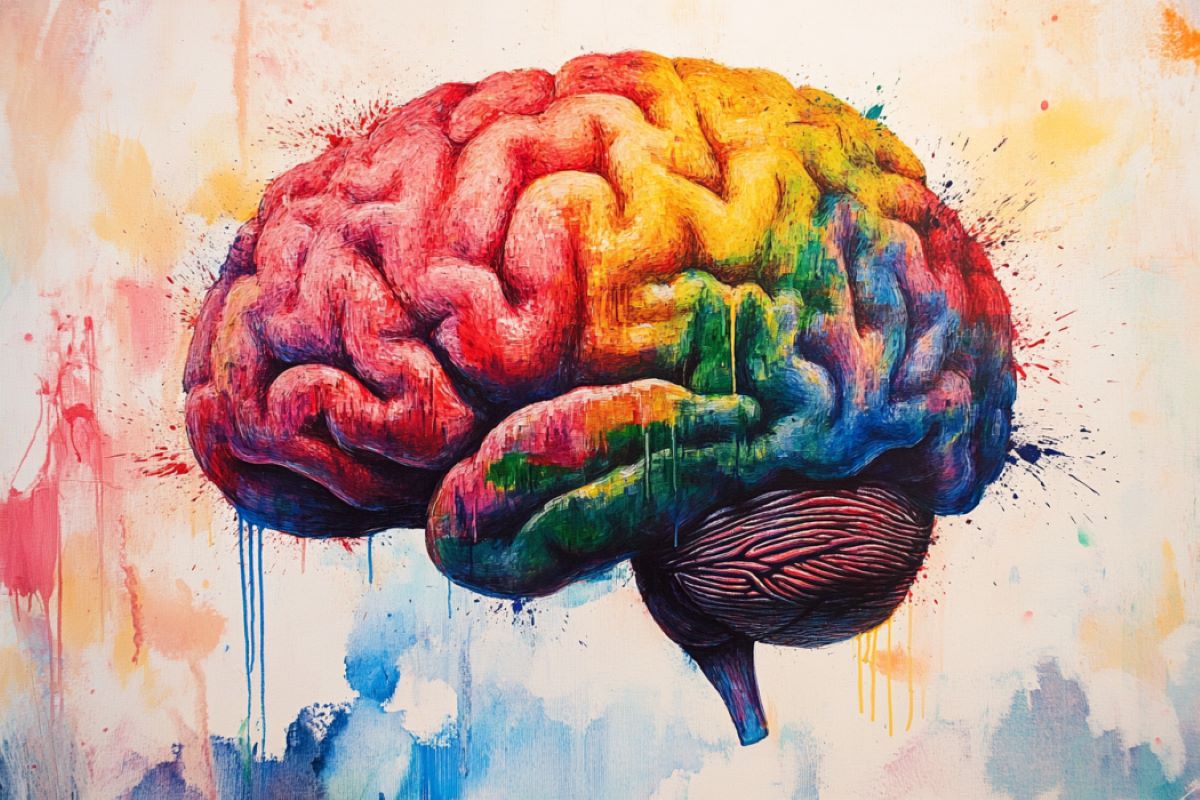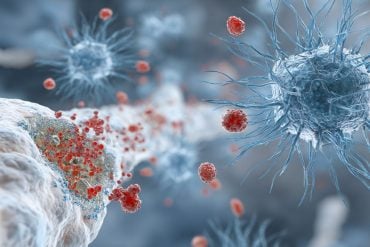Summary: Researchers have identified a link between brain overgrowth and the severity of social and communication symptoms in children with autism spectrum disorder (ASD).
By analyzing MRI scans and conducting experiments with brain organoids, the study found that children with the most severe ASD symptoms had significantly larger brains. This enlargement is associated with altered activity of the enzyme Ndel1, which plays a crucial role in neuron development.
The findings open new avenues for understanding ASD and its varying symptom severity.
Key Facts:
- Brain overgrowth in children with severe ASD symptoms was up to 41% larger than controls.
- The enzyme Ndel1, crucial for neuron development, is linked to this brain enlargement.
- The study suggests potential biomarkers in blood for predicting ASD symptom severity.
Source: FAPESP
A study conducted by researchers based in Brazil and the United States has demonstrated that there is a link between brain overgrowth and the severity of social and communication symptoms in children with autism spectrum disorder (ASD).
An article describing the study is published in the journal Molecular Autism.
The findings are based on an analysis of magnetic resonance images of the brains of more than 900 children with ASD (conducted in a 2017 study by the group) and on recent experiments with brain organoids – “mini-brains” that mimic structural and functional features of full-size brains. The organoids were grown in the laboratory from induced plenipotentiary stem cells (iPSCs) derived from blood donated by children who took part in the earlier study.
Brain enlargement correlated with symptom severity in both the MRI and organoid analyses. According to the article, the mini-brains derived from cells donated by children with the most severe symptoms were up to 41% larger than the controls.
“Not all children with ASD and severe symptoms will have an enlarged brain, but the symptoms are more severe when the brain is enlarged,” said Mirian Hayashi, penultimate author of the article and a professor in the Department of Pharmacology at the Federal University of São Paulo’s Medical School (EPM-UNIFESP) in Brazil.
This brain enlargement appears to be associated with alterations in the activity of Ndel1, an enzyme that plays an important role in embryonic neuron differentiation and migration.
An equivalent phenomenon was previously observed by the UNIFESP group in children with microcephaly induced by zika virus. Ndel1 is associated with several neurological disorders, such as schizophrenia, a first psychotic episode and bipolar disorder, as well as zika congenital syndrome.
As the researchers point out, social and communication symptoms are common among individuals on the autistic spectrum, but the severity differs from one person to another. Although the biological mechanism that determines the intensity of the symptoms remains unknown, the findings of this research open up new avenues for understanding ASD.
Methodology
The study was divided into two stages. The first involved an analysis of MRI brain images and diagnostic data for more than 900 children with ASD assessed in a cohort study by Eric Courchesne, one of the world’s leading experts on the neurobiology of autism. Professor Courchesne is the overall director and principal investigator of the Autism Center of Excellence at the University of California San Diego (UCSD) in the United States and heads the UCSD Autism Center’s MRI Project on early brain development in autism.
The second stage consisted of experiments with mini-brains developed at the laboratory led by Alysson R. Muotri, a professor in UCSD’s Departments of Pediatrics and Cellular & Molecular Medicine. The experiments showed that issues relating to cell migration and neuron formation are already present during brain formation, potentially affecting brain size.
In particular, Ndel1 plays a key role in brain enlargement in children with ASD.
“Neuronal alterations had previously been detected in people with autism. Analysis of the mini-brains confirmed that the number of neural progenitors [multipotent neural stem cells that can differentiate into neurons, astrocytes and oligodendrocytes] increased when brain enlargement occurred.
“Our experiments suggested that brain enlargement in these cases may have been due to a large number of neural progenitors that were unable to differentiate during embryogenesis,” said João Nani, who conducted the analysis at Prof. Muotri’s lab with FAPESP’s support.
Many neural cells were not behaving as they should or creating connections (synapses) as expected. “The number of connections is more important than the number of neurons. That’s why having more neurons [as in brain overgrowth] and having fewer neurons [as in microcephaly] are both harmful,” Nani said.
The researchers also measured Ndel1 activity and expression in the mini-brains, detecting an imbalance in cases of brain enlargement.
“Ndel1 is associated with cell division and neuron differentiation. These processes involve other proteins, of course, but the entire system is probably out of kilter in brain overgrowth, and Ndel1 can be a biomarker of an alteration. We found that this imbalance can lead to both brain enlargement and brain reduction.
“However, in the cases we analyzed, there were more mononuclear cells in the peripheral blood of children with autism and severity of communication and social symptoms,” Nani said.
The researchers plan to conduct further studies with the aim of identifying biomarkers associated with ASD severity in blood samples from patients.
About this Autism research news
Author: Heloisa Reinert
Source: FAPESP
Contact: Heloisa Reinert – FAPESP
Image: The image is credited to Neuroscience News
Original Research: Open access.
“Embryonic origin of two ASD subtypes of social symptom severity: the larger the brain cortical organoid size, the more severe the social symptoms” by Mirian Hayashi. Molecular Autism
Abstract
Embryonic origin of two ASD subtypes of social symptom severity: the larger the brain cortical organoid size, the more severe the social symptoms
Background
Social affective and communication symptoms are central to autism spectrum disorder (ASD), yet their severity differs across toddlers: Some toddlers with ASD display improving abilities across early ages and develop good social and language skills, while others with “profound” autism have persistently low social, language and cognitive skills and require lifelong care. The biological origins of these opposite ASD social severity subtypes and developmental trajectories are not known.
Methods
Because ASD involves early brain overgrowth and excess neurons, we measured size and growth in 4910 embryonic-stage brain cortical organoids (BCOs) from a total of 10 toddlers with ASD and 6 controls (averaging 196 individual BCOs measured/subject). In a 2021 batch, we measured BCOs from 10 ASD and 5 controls. In a 2022 batch, we tested replicability of BCO size and growth effects by generating and measuring an independent batch of BCOs from 6 ASD and 4 control subjects.
BCO size was analyzed within the context of our large, one-of-a-kind social symptom, social attention, social brain and social and language psychometric normative datasets ranging from N = 266 to N = 1902 toddlers. BCO growth rates were examined by measuring size changes between 1- and 2-months of organoid development.
Neurogenesis markers at 2-months were examined at the cellular level. At the molecular level, we measured activity and expression of Ndel1; Ndel1 is a prime target for cell cycle-activated kinases; known to regulate cell cycle, proliferation, neurogenesis, and growth; and known to be involved in neuropsychiatric conditions.
Results
At the BCO level, analyses showed BCO size was significantly enlarged by 39% and 41% in ASD in the 2021 and 2022 batches. The larger the embryonic BCO size, the more severe the ASD social symptoms. Correlations between BCO size and social symptoms were r = 0.719 in the 2021 batch and r = 0. 873 in the replication 2022 batch. ASD BCOs grew at an accelerated rate nearly 3 times faster than controls. At the cell level, the two largest ASD BCOs had accelerated neurogenesis. At the molecular level, Ndel1 activity was highly correlated with the growth rate and size of BCOs.
Two BCO subtypes were found in ASD toddlers: Those in one subtype had very enlarged BCO size with accelerated rate of growth and neurogenesis; a profound autism clinical phenotype displaying severe social symptoms, reduced social attention, reduced cognitive, very low language and social IQ; and substantially altered growth in specific cortical social, language and sensory regions. Those in a second subtype had milder BCO enlargement and milder social, attention, cognitive, language and cortical differences.
Limitations
Larger samples of ASD toddler-derived BCO and clinical phenotypes may reveal additional ASD embryonic subtypes.
Conclusions
By embryogenesis, the biological bases of two subtypes of ASD social and brain development—profound autism and mild autism—are already present and measurable and involve dysregulated cell proliferation and accelerated neurogenesis and growth. The larger the embryonic BCO size in ASD, the more severe the toddler’s social symptoms and the more reduced the social attention, language ability, and IQ, and the more atypical the growth of social and language brain regions.







